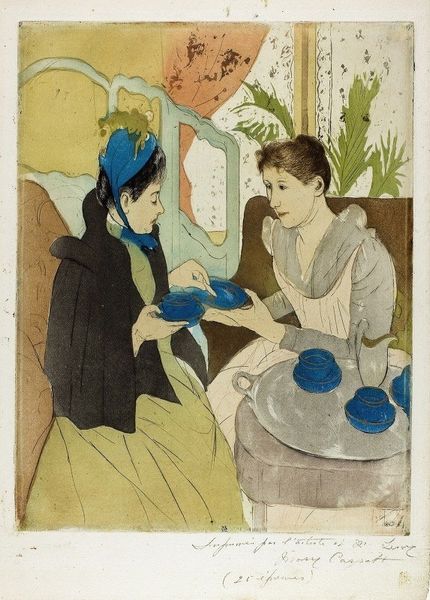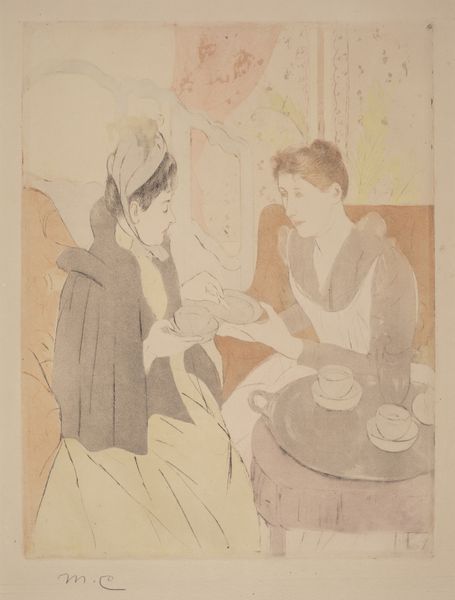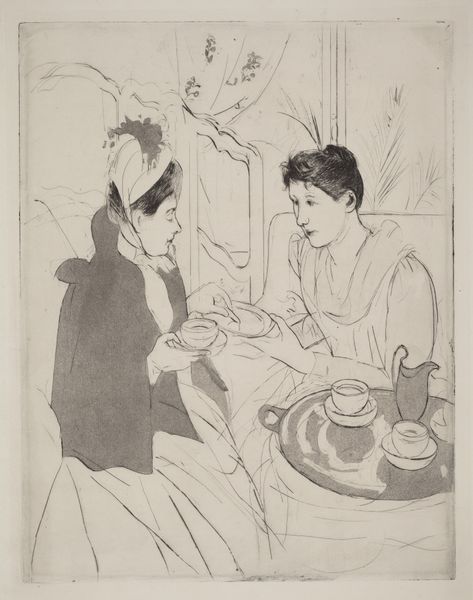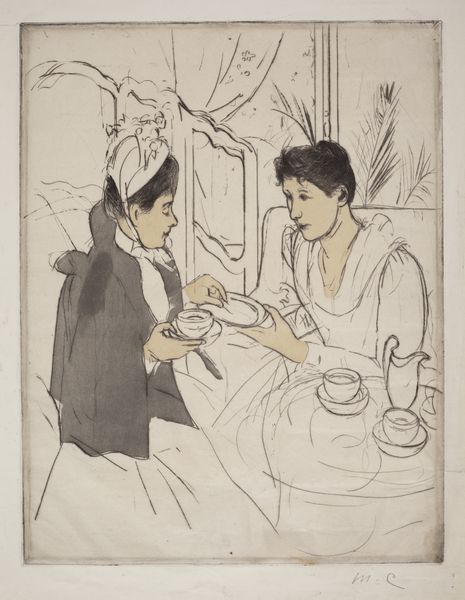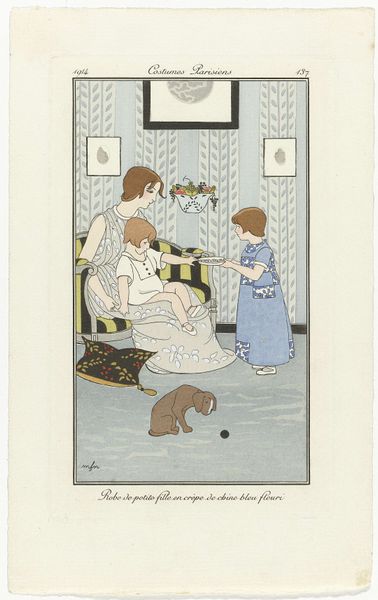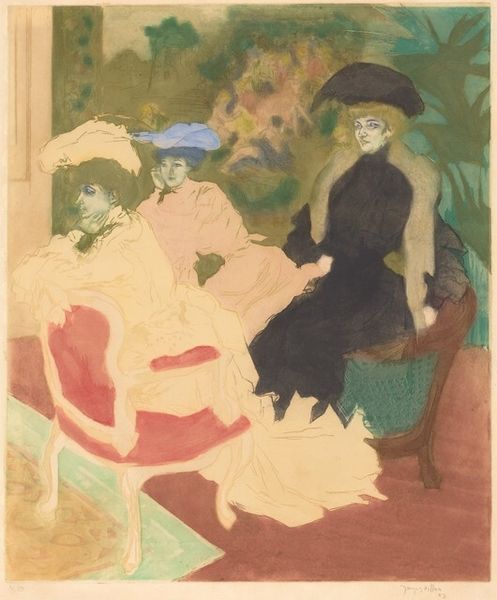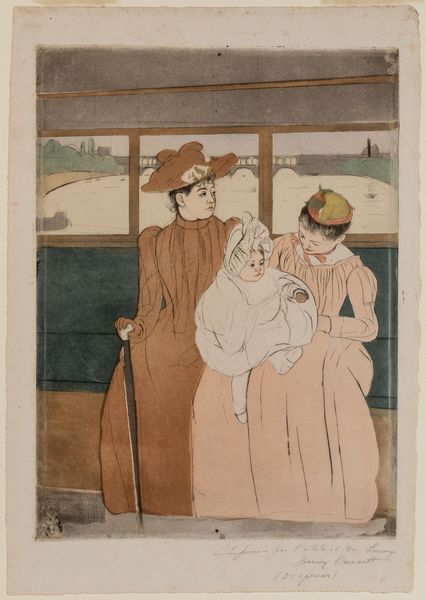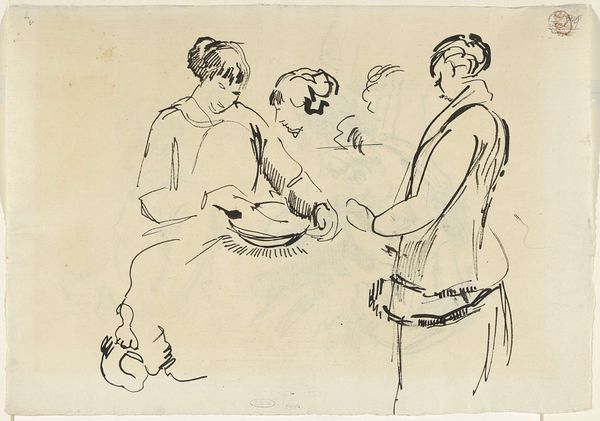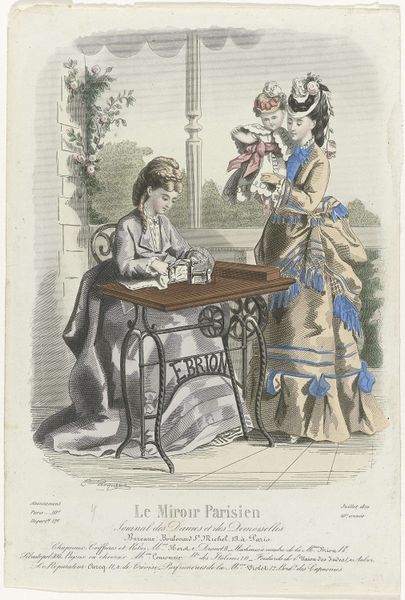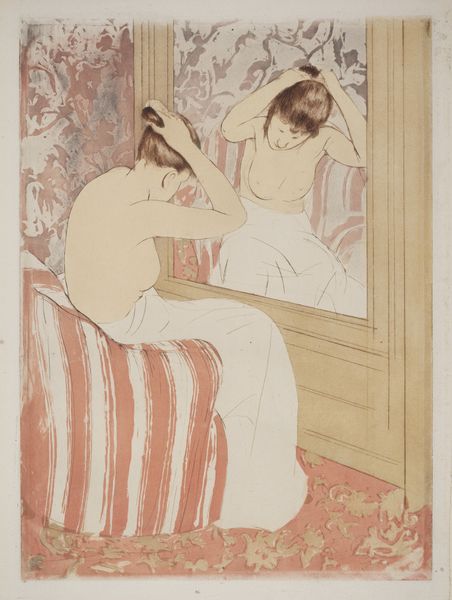
Dimensions: plate: 34.8 Ã 27 cm (13 11/16 Ã 10 5/8 in.) sheet: 43.2 Ã 30.2 cm (17 Ã 11 7/8 in.) frame: 65.4 Ã 57.2 cm (25 3/4 Ã 22 1/2 in.)
Copyright: CC0 1.0
Curator: This is Mary Cassatt's "Afternoon Tea Party". Look closely, and you'll see it's not a painting, but a color print with drypoint and aquatint. Editor: It has such a gentle, domestic feel. The muted colors create a sense of quiet intimacy. Blue seems to be the color that pops up, appearing in the teacups. Curator: Precisely. Cassatt often depicted women in domestic settings, elevating everyday rituals like tea into moments of social significance. The printmaking process itself was significant for challenging academic art hierarchies. Editor: And the teacups! They're like little sapphires, drawing your eye and anchoring the composition. Tea itself has such deep cultural weight, representing connection, hospitality, and shared ritual. Curator: Absolutely. Cassatt's work challenged the male gaze dominant in Impressionism, depicting women's interior lives with empathy. Her use of Japanese print techniques also speaks to broader artistic exchange at the time. Editor: It makes you think about the unacknowledged importance of these private moments in shaping women's social and emotional worlds. It's amazing how much this art can convey with a few visual symbols! Curator: It’s a quiet revolution, really. Editor: Indeed. It truly makes one appreciate the details hidden in plain sight.
Comments
No comments
Be the first to comment and join the conversation on the ultimate creative platform.
